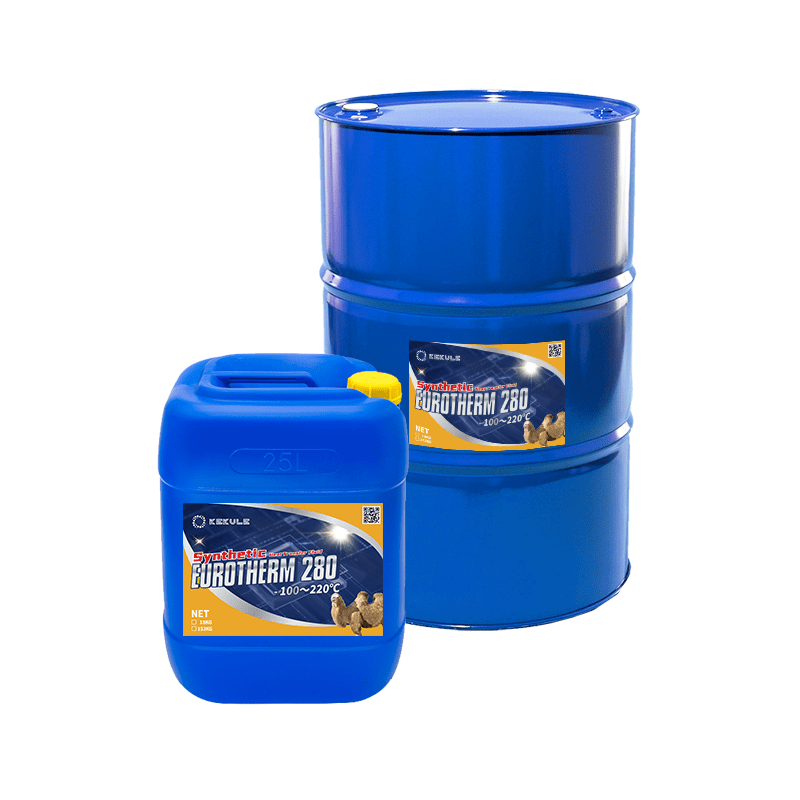Exactly How to Select the most effective Heat Transfer Fluid for Your Heating and Cooling Systems
Choosing the proper warmth transfer liquid for heating and cooling systems is a nuanced process that requires cautious consideration of multiple factors. It is vital to examine the details functional temperature range, as well as the thermal residential or commercial properties such as conductivity and thickness that effect system effectiveness.
Comprehending Heat Transfer Fluids
Heat transfer fluids play a crucial duty in different industrial and commercial applications by helping with the transfer of thermal power. These liquids are vital in systems such as heating, cooling, and energy generation, where reliable thermal administration is critical for operational efficiency. The main function of heat transfer liquids is to take in heat from a source and transport it to a designated location, where it can be utilized for heating or transformed right into mechanical energy.
Warm transfer fluids can be identified right into several categories, including liquids, gases, and phase-change products, each offering certain applications based on their thermal homes. silicone oil. Typical examples consist of water, oils, and cooling agents, which are picked depending on the temperature variety, stress problems, and compatibility with system materials
The efficiency of a warm transfer fluid can significantly affect the overall effectiveness of a thermal system. Elements such as thickness, thermal conductivity, and details warm capability identify exactly how well a liquid can transfer warm. Recognizing these qualities is essential for selecting the most appropriate liquid for a certain application, ensuring ideal performance and dependability in commercial procedures.
Trick Characteristic to Consider
Picking the suitable heat transfer liquid requires cautious factor to consider of numerous vital properties that influence efficiency and efficiency. Thermal conductivity is critical, as it determines the fluid's capacity to transfer warm effectively. Higher thermal conductivity commonly results in better efficiency in heating & cooling applications.
One more necessary residential property is thickness, which influences the liquid's flow characteristics. A liquid with reduced thickness at functional temperatures will certainly move more conveniently, minimizing pumping energy demands. In addition, the particular warm capability of the fluid plays a vital function; a greater particular warmth shows the fluid can store extra thermal energy, boosting system efficiency.

Kinds Of Heat Transfer Fluids
A variety of warm transfer liquids are readily available, each designed to meet specific functional demands and performance requirements. The primary groups of heat transfer fluids consist of water, natural fluids, and refrigerants.
Water is generally used as a result of its high warm ability and affordable, making it appropriate for lots of cooling and heating applications; however, it has constraints concerning freezing and steaming points. Organic liquids, such as glycol mixtures, use a broader temperature variety and are much less prone to freezing, making them ideal for applications in chillier environments. These liquids can also supply better thermal stability compared to water.
Cooling agents are designed for particular applications in vapor-compression refrigeration and air conditioning systems. They have distinct thermodynamic residential or commercial properties that allow reliable heat transfer at low temperatures. Various other specialized liquids consist of mineral oils, which are typically utilized in high-temperature applications as a result of their thermal security and non-corrosive nature.
Selecting the proper heat transfer fluid involves thinking about the operating temperature level variety, thermal homes, and system compatibility. By recognizing the kinds of fluids available, one can make educated decisions that improve system performance and durability.
Environmental and Security Elements
When reviewing warmth transfer liquids, it is very important to consider the ecological and safety and security variables associated with their use. The selection of a fluid need to straighten with governing criteria and decrease potential environmental impact. Fluids that are non-toxic, biodegradable, and have low international warming possibility are preferred, as they add to sustainability and reduce obligation in case of spills or leakages.
Security is an additional essential factor to consider; the fluid's flash point, poisoning, and possibility for harmful reactions should be completely assessed. Liquids with high flash factors are typically more secure, reducing the threat of fire in high-temperature applications - propylene glycol. Additionally, the compatibility of the fluid with system products need to be assessed to avoid destruction, which can cause leakages and possibly hazardous scenarios
Moreover, proper handling and disposal treatments should be plainly laid out. Making use of fluids that are very easy to dispose and take care of of can considerably reduce ecological threats. By prioritizing these ecological and safety aspects, companies can make educated choices that not just secure their employees and the read this article setting however additionally improve the total efficiency and reliability of their home heating and cooling down systems.
Application-Specific Recommendations
Recognizing the particular demands of an offered application is vital for selecting one of the most effective warm transfer liquid. Different systems have distinct thermal needs, running temperatures, and fluid characteristics that influence the choice procedure. For example, in applications involving high-temperature atmospheres such as focused solar energy systems, artificial oils or molten salts might be preferable due to their remarkable thermal security and heat transfer efficiency.

Additionally, markets handling destructive substances, such as chemical handling, may need warmth transfer fluids with improved deterioration inhibitors to extend system life and maintain look here performance.
Moreover, applications with strict ecological regulations may profit from bio-based liquids or those with reduced poisoning profiles. By completely assessing these application-specific aspects, engineers can guarantee optimum performance, safety and security, and longevity of their heating and cooling down systems while sticking to regulative compliance and sustainability objectives.
Conclusion

Finally, picking the ideal heat transfer liquid for home heating and cooling down systems requires an extensive assessment of different factors, consisting of operational temperature level array, thermal homes, material compatibility, and environmental safety and security. An educated option inevitably boosts system performance, minimizes operational costs, and advertises sustainability. Focusing on these considerations ensures the durability and performance of heating and cooling down systems, contributing to overall performance in thermal administration applications.
The main function of heat transfer liquids is to take in heat from a resource index and transportation it to a designated area, where it can be used for heating or converted into mechanical power.
The efficiency of a heat transfer liquid can substantially impact the total effectiveness of a thermal system. Aspects such as thickness, thermal conductivity, and specific heat ability figure out how well a liquid can transfer warmth. Furthermore, the specific warm capacity of the liquid plays an important duty; a higher certain heat shows the liquid can store much more thermal energy, improving system performance.
In final thought, picking the optimal warmth transfer liquid for heating and cooling down systems demands a comprehensive analysis of numerous variables, consisting of operational temperature level variety, thermal homes, product compatibility, and environmental safety and security.